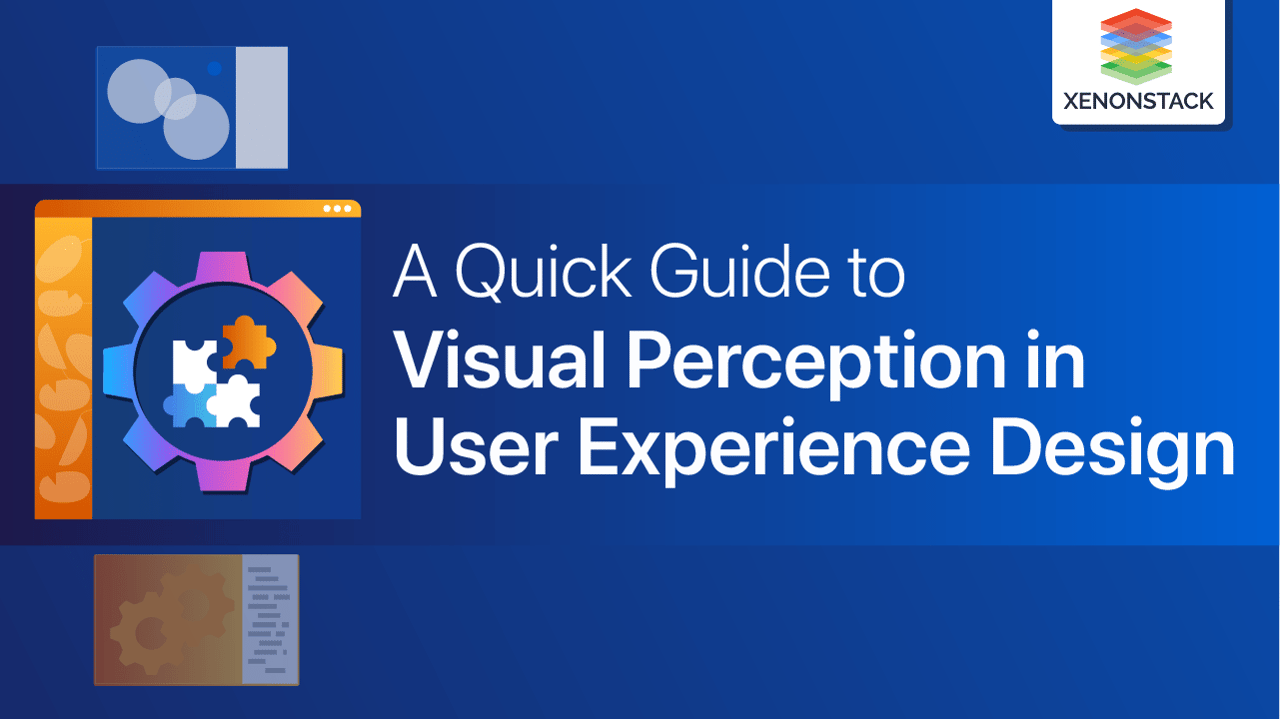
Introduction to Visual Perception in Design
Perception: Perception is a way of interpreting, regarding, and understanding things. It is the ability to hear, see or become aware of something with the help of the senses.
Perception in design: Designers create a perception by using various shapes, colors, typography, and images. Graphic perceptions of ideas and symbols are created by making similarities in objects, a continuation of eye movement through the design, closure of spaces and proximity of groups and grouping of figures; such practices help the designer shape and give the visual experience a distinct way through which they can convey their desired message.
Improving, and expanding the design toolkit are the only ways to build a character in the design community. Click to explore about our, Top 10 UX UI Designs
What is Perspective in design?
Below highlighted are the three types of perspective:
- One-point perspective: One point perspective has one vanishing point on the horizon. It starts with a single point and has its face directly facing the observer.
- Two-point perspective: Two-point perspective consists of multiple corners and is positioned so that it is always visible from one corner to the users. It starts with the vertical edge of the object.
- Three-point Perspective: Three-point Perspective is either seen from up to down or vice-versa. It starts with the corner of the object.
Why Perception in Design is important?
While designing a product's packaging, the designer needs to give a perception of what the company is trying to sell and what's inside the package. Giving too much or too less information or adding non-important graphics can confuse the customer. The sense of perception should encourage the customer to look at the product and use what is inside. The experience is always graphically matched with experience.
A kind of non-functional testing used to assess how easy and flexible a website is to use. Click to explore about our, Usability Testing Methods
What are the 7 Gestalt Principles?
Gestalt means "unified Whole." It describes how the human senses organize visual elements into unified wholes.
Here are the Seven most important gestalt principles of design:-
Closure
Closure means that an object has an incomplete and not completely closed space. When our brain sees such images, it tries to fill the missing part to make it look like a recognizable image or pattern.
Proximity
Proximity happens, When the objects are closely placed together, and the objects create a group. If the individual elements also look similar, then the group seems to be a single whole, even if they are different objects.
Similarity
When the objects look similar, the human senses often perceive them as a single illustration.
Figure/Ground
This principle says that the human eye differentiates an object from its surrounding. This happens when the light and shape are used so that the image jumps out of a series of shapes.
Continuity
This principle states that the human eye follows a similar pattern from one point to another. Continuity occurs when a group of objects comes in a single line or forms a cure-like pattern while being related to each other on the frame.
Focal Point
This principle states that in a group or composition of objects, the focus is the first thing that visually catches the eye or attracts the viewer's attention.
Common Fate
This principle shows that people group objects that point or move in the same direction. They can be a collection of different objects, but they are considered a single phenomenon because they move like grouped objects and point in the same direction.
UX designers must resist the urge to over-design. A designer should keep some best practices in mind before designing for wellness. Click to explore about our, Healthcare UX Designs
How to improve Visual perception in design?
Below are the steps to improve visual perception in design.
Visual Clues
This is the main method for working on the user's vision. Conveying and directing users with obvious signals can be as straightforward as a little symbol that assists them in fabricating and linking the signal with ordinary things. Pictures are supposed to be handled so that they can convey messages multiple times quicker than text. Since straightforward visual pictures can be straightforwardly remembered and perceived, the mind initially perceives and retains shapes like images, pictures, and outlines.
Direction Arrow
It helps the users toward the subsequent stage they need to perform. For onboarding, checkout, or straightforward merry go round looking over, it assists with furnishing the client with the leftover advances that should be finished to perceive each plan accordingly.
Spacing and Kerning
It's not just about the appropriate dispersing between two sentences. Appropriate dispersing among letters and passages is likewise vital. This is particularly significant while managing screens with a ton of settings. The importance of the text is significant for any site or item. Users lack the opportunity and willpower to look into many jumbled items.
The method of changing the space between two characters to improve an outwardly satisfying and consistent stream between letters.Click to explore about our, Kerning Typography Types
Highlight the line
Not all expressions are similarly significant in a specific plan. Attempt to stress the pieces of the sentence that give the users additional background information, so the user doesn't need to peruse the whole passage to comprehend.
Eliminate Visual Distraction
Try not to divert users with purposeless plan components. Try not to add extra improvements to your plan. Eliminate whatever number formats could be expected under the circumstances that are outwardly unimportant, particularly for intelligent screens where users need to perform activities. Urge users to utilize the application frequently by giving what they need and keeping the plan far removed or jumbled.
Boundary Outline
Feature components, such as toaster ovens and pop-ups with inconspicuous shadows, add profundity between them. The distinction in variety between the blunder status and the admonition status in the information fields additionally assists the user with remembering them. Utilizing contrast, the plan needs to isolate the frontal area from the foundation and perceive objects from a mind-blowing scope of spatial directions and precise signals.
Divide your visual activity into smaller steps
While changing away at a screen, view them individually with the goal that the user can generate zero interest in each component. In turn, the small visual activities should be connected and lead to a goal that the user desires, unless the broken flow will lead the user to stop the search in the middle.
Ethical design frameworks reduce the distance between the need and the want. Click to explore about our, Top 10 Principles of Ethical UX Design
Conclusion
Visual perception plays a vital role in deafening user experience. A design with good visual perception will automatically lead users to the desired information set for what they were looking for. Proper knowledge of Gestalt principles and various perception techniques will help to enhance visual perception in user experience.
- Discover here about User Experience design tools
- Explore more about User Experience Design Solutions


